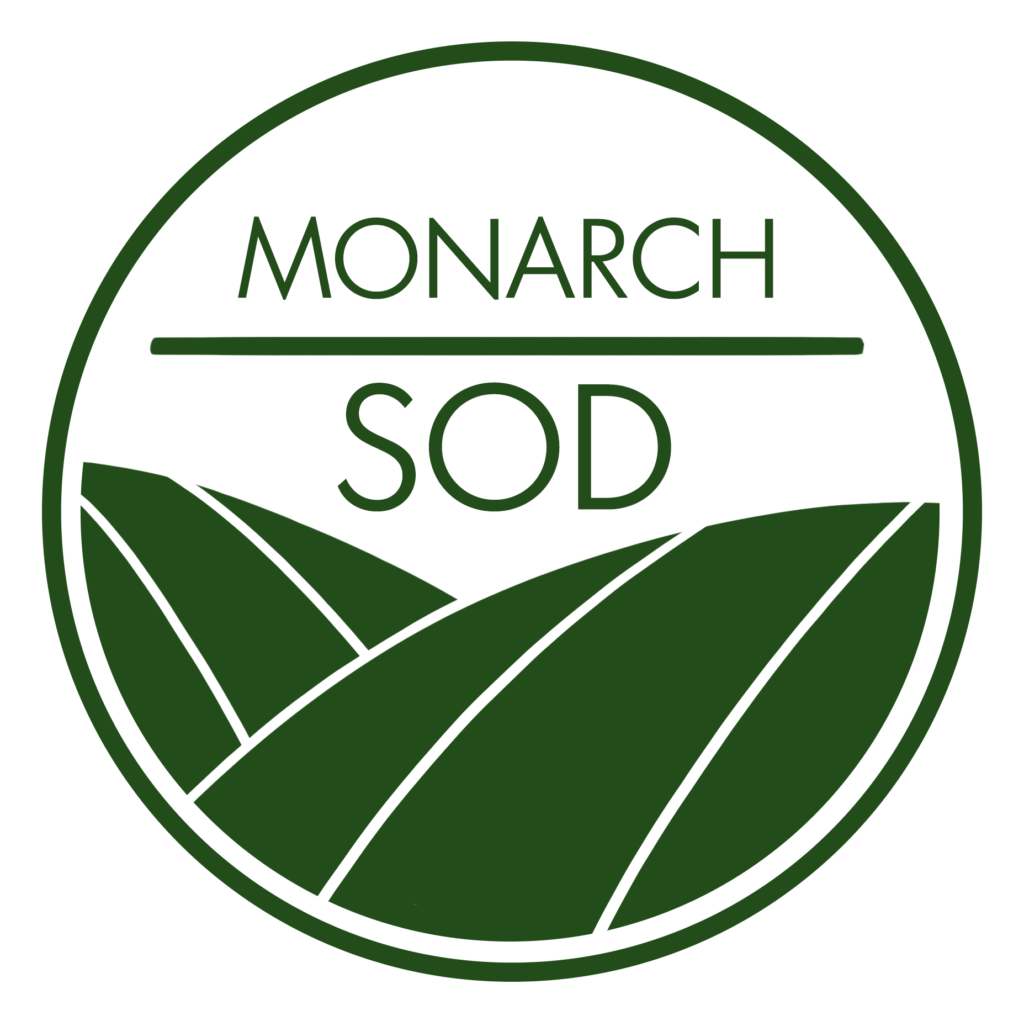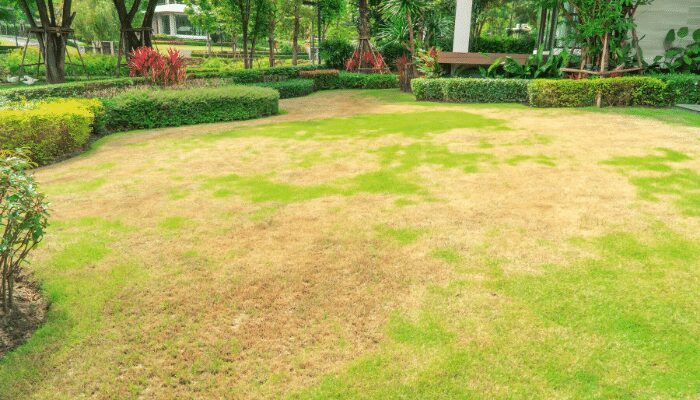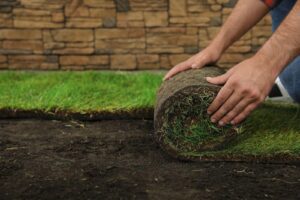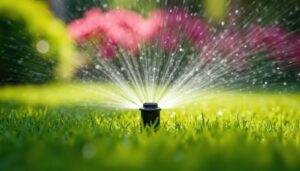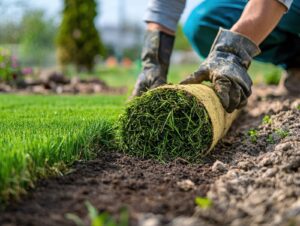You don’t get it. Last year, your grass looked lush and green — hallmarks of a healthy lawn. This year, you’ve noticed brown patches creeping up, yet, you didn’t do anything differently and take good care of it.
Today, we’ll discuss Why your grass is brown and what you can do about it.
Why Does My Grass Turn Brown?
Put simply, your grass will turn brown when roots can no longer grab nutrients or water from the soil or when the soil doesn’t have enough food or water. There are several reasons for this.
- Sprinklers Misaligned or Heads Damaged – Brown patches that show up where you know sprinklers hit it is a good sign you need to adjust your sprinkler heads or check for damage.
TIP: Turn on the hose and let it sit in the affected grass for at least an hour on low strength to drench those areas.
- Weeds – Those pesky and invasive weeds that compete for water and food could be infiltrating your lawn. Controlling them is tricky, and timing is key. Apply a pre-emergent herbicide in spring that prevents weed seeds from germinating.
TIP: Hire a professional lawn care company that can customize annual maintenance care and treat any issues that may come up.
- Drought/Heat – In the hot summer months, and in particular, windy days, it’s vital your lawn gets additional water, or else the grass starts going dormant. This is normal and will rebound when it gets cooler, and you have rain. To check if this is your problem, observe any prematurely dropping tree leaves that are folded up.
TIP: To treat a drought-dormant lawn, apply an additional ½ inch of water every few weeks during drought times. If you want to green it up again, applying an inch of water every week will help. This equals about two hours of sprinkler use.
- Disease – Many diseases and fungi can affect your lawn, turning your grass brown. Check for any white, black, or brown substances. If you have them, you likely have a lawn disease that needs diagnosing and treated by a lawn specialist.
TIP: It’s crucial to water early morning, do regular mowing, proper lawn aeration in the spring, and thatch management to prevent these issues.
- Chinch Bugs – Drought conditions are prime-time for these bugs to feast on your plant juices. Your lawn starts out wilting, goes yellow, then turns brown eventually. To identify if you have chinch bugs, pull a wilted patch and see if there are any small red, orange, brown, or black insects with white markings.
TIP: Have consistent moisture and perform thatch removal to prevent chinch bugs. If you have them, you may have to use insecticides, but they have harsh chemicals that run off into the watershed and harm the good bugs.
- Grubs – Beetle larvae can eat your turf roots and look similar to drought damage. Take a shovel and cut back a 1-by-1 foot square of turf and look for at least ten grubs per square foot — this is a problem.
TIP: For control of grubs, allow your lawn to dry before watering again. Planting low-maintenance turf grasses help prevents grubs.
- Pet Waste – If you have round patches of dead grass in several areas and have a dog, it’s likely urine stains are causing it since urine contains acid.
TIP: Flush the area with water where your dog typically pees to help dilute the acid.
Damaged Lawn that Needs Replacing?
If any of the above has damaged parts or all of your lawn, contact Monarch Sod. Our professional sod installers will ensure you get the best quality Kentucky Bluegrass or drought-tolerant grass. We serve Utah and Salt Lake Counties.
var /*99586587347*/ toto slot
